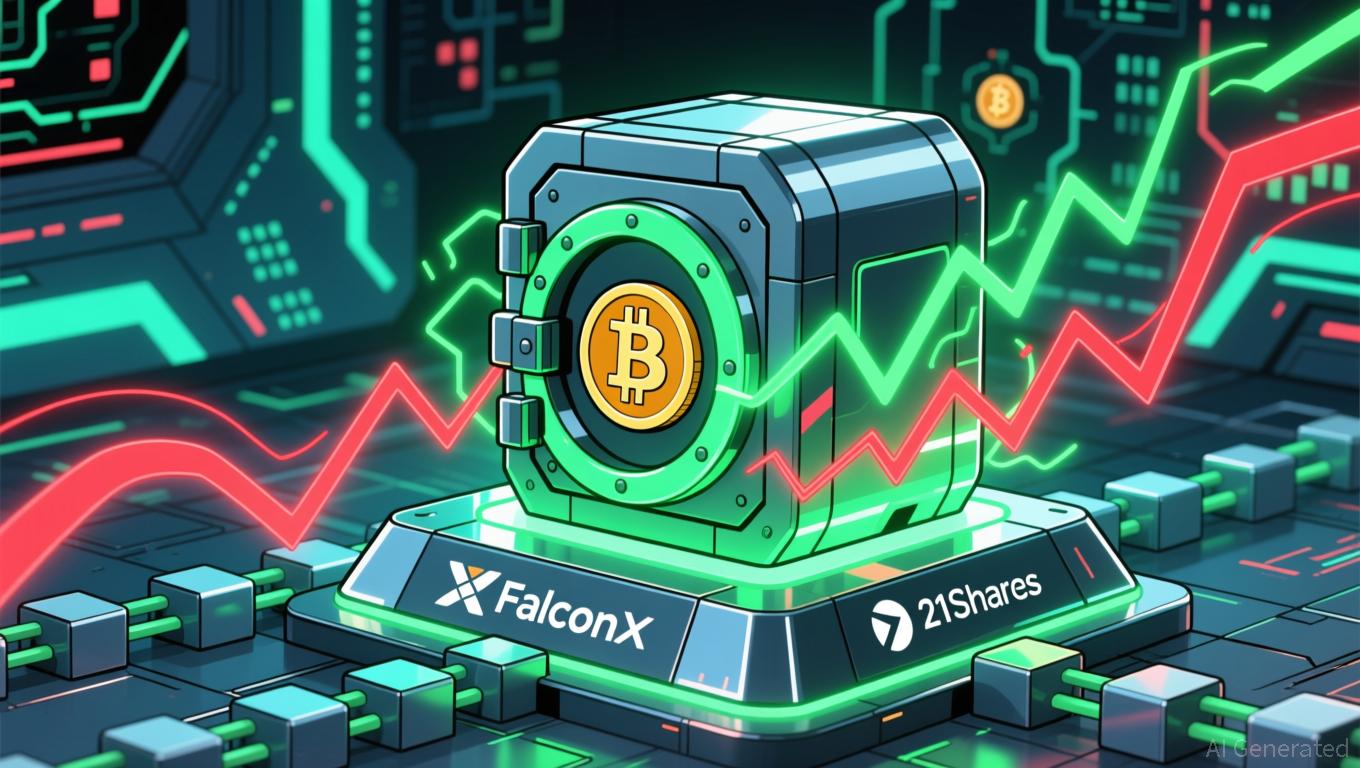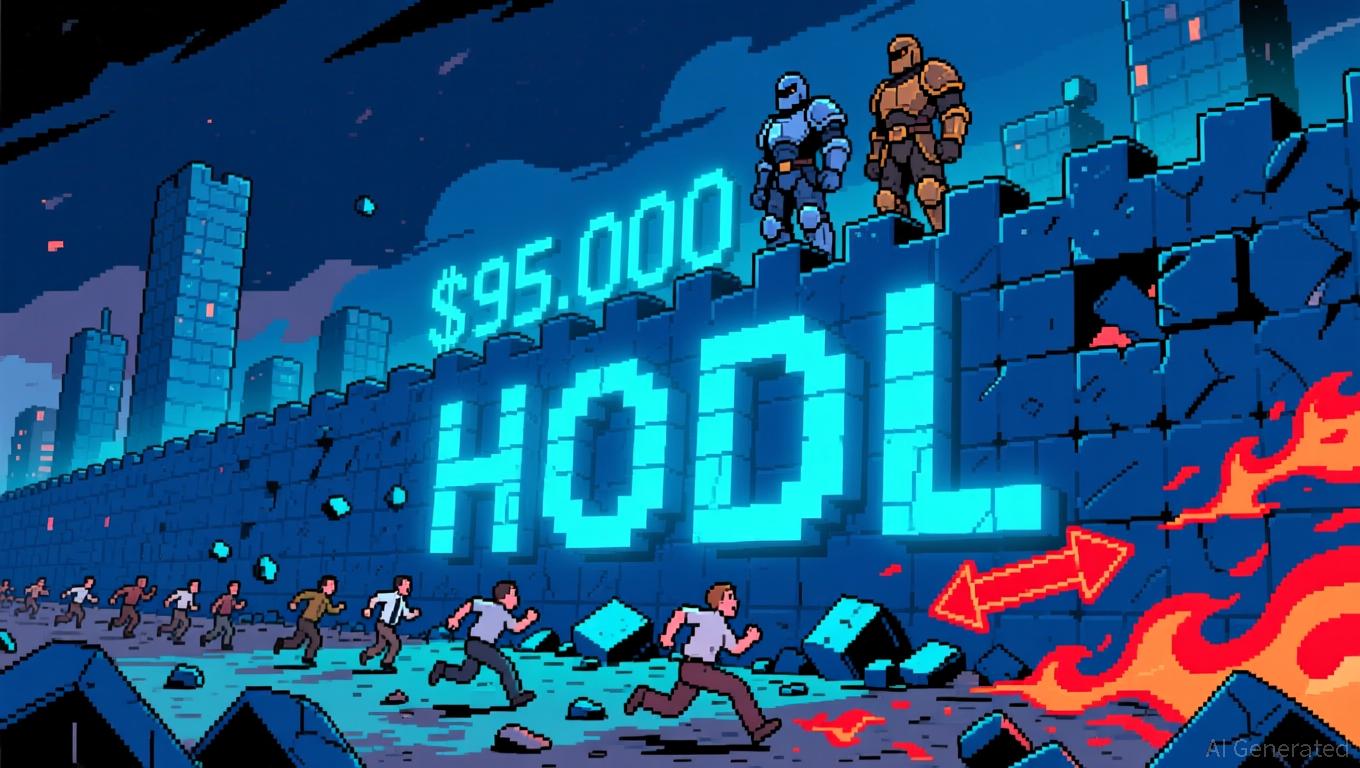Stablecoin Surge Compels Basel to Address Regulatory Inflexibility
- Global regulators, led by the Basel Committee, face pressure to revise strict 1,250% capital requirements for stablecoins as their role in institutional finance expands. - The U.S. Fed, Bank of England, and EU reject current rules, citing impracticality, while stablecoins like USDT/USDC now underpin regulated crypto derivatives and yield products. - Basel chair Erik Thedéen acknowledges the need for a "different approach" to risk-weighting stablecoins, which now enable institutional access to crypto mark
Global banking regulators are reconsidering their tough capital rules for digital currencies as the stablecoin sector experiences rapid growth, with the Basel Committee under increasing pressure to adjust regulations that have largely kept banks out of the crypto space. The committee's existing policy, which
The Basel Committee's uncompromising stance has met with open opposition from leading economies. Both the U.S. Federal Reserve and the Bank of England have indicated they will not adopt the rules as they stand, with Federal Reserve representatives describing the capital requirements as "impractical" and "not grounded in reality"

The swift rise of stablecoins has challenged previous beliefs about their risks. Erik Thedéen, who chairs the Basel Committee, admitted in an interview with the Financial Times that the growth of stablecoins has been "quite significant,"
European regulators are also confronting the challenges posed by these developments.
The Basel Committee's 2022 guidelines, scheduled to be enforced in January 2026, are already being reconsidered. Thedéen stressed the importance of "rapid evaluation" to determine whether stablecoins—and, by extension, permissionless blockchains—should continue to carry the 1,250% risk weight or be reclassified. The decision will shape whether banks can join the next wave of crypto innovation, balancing progress with financial stability. For now, the gap between regulatory caution and the pace of market development remains wide, with the U.S. and UK
Disclaimer: The content of this article solely reflects the author's opinion and does not represent the platform in any capacity. This article is not intended to serve as a reference for making investment decisions.
You may also like
Dogecoin Latest Updates: Crypto ETF Boom Begins with 21Shares Launching Enhanced Dogecoin Exposure
- 21Shares launches leveraged Dogecoin ETF, doubling daily returns, following its FalconX merger to expand institutional crypto access. - The product joins a surge of U.S. altcoin ETFs like Grayscale's Dogecoin Trust, signaling growing institutional confidence in crypto assets. - FalconX's $8B-asset acquisition of 21Shares combines trading infrastructure with ETP innovation, aiming to accelerate digital asset adoption globally. - Analysts highlight leveraged ETFs' appeal to sophisticated investors despite

Bitcoin News Update: Whale's $28.7 Million Profit Highlights Leverage Issues in Crypto
- A crypto whale earned $28.7M via a 20x leveraged short as Bitcoin fell 29% from $126K to $90K. - Market turmoil saw $2.9B ETF outflows and $19B in liquidations during October's "black Friday" volatility. - Leveraged trading amplified Bitcoin's decline, erasing $1.2T in value through cascading margin calls. - Institutional leverage via derivatives and $74B in crypto loans deepened systemic risks during the selloff. - Analysts warn of ongoing liquidation risks as Bitcoin nears $91K with whale selling inten
Bitcoin Updates: The HODL Barrier Faces a Crucial Moment—Bitcoin’s $95,000 Challenge May Determine the Path Toward $85,000
- Bitcoin's drop below $100,000 tests the $95,000 HODL wall, where 65% of invested USD remains concentrated. - Sharp sell-offs ($655M liquidations) and ETF outflows ($961M since Nov) expose fragile market structure. - STHs hold 30% of LTH supply above $95,000, with 80% of recent sales at a loss as profit-loss ratios fall below 0.21. - A break below $95,000 could trigger a path to $85,000, contrasting with 2022's sharper $45K-to-$36K collapse. - LTH resolve determines whether the HODL wall stabilizes or acc

Internet Computer (ICP) Price Soars: An In-Depth Look at the Forces Driving the Surge
- Internet Computer (ICP) surged over 6% in 2025, driven by institutional partnerships, infrastructure upgrades, and speculative trading. - TVL hit $237B via DeFi growth, while Fission/Chain Fusion upgrades boosted scalability and cross-chain interoperability with Bitcoin/Ethereum. - November 2025 saw 261% transaction volume spike, but DApp engagement fell 22.4%, highlighting adoption gaps despite technical progress. - Speculative fervor and AI platform Caffeine's launch fueled momentum, though security ri